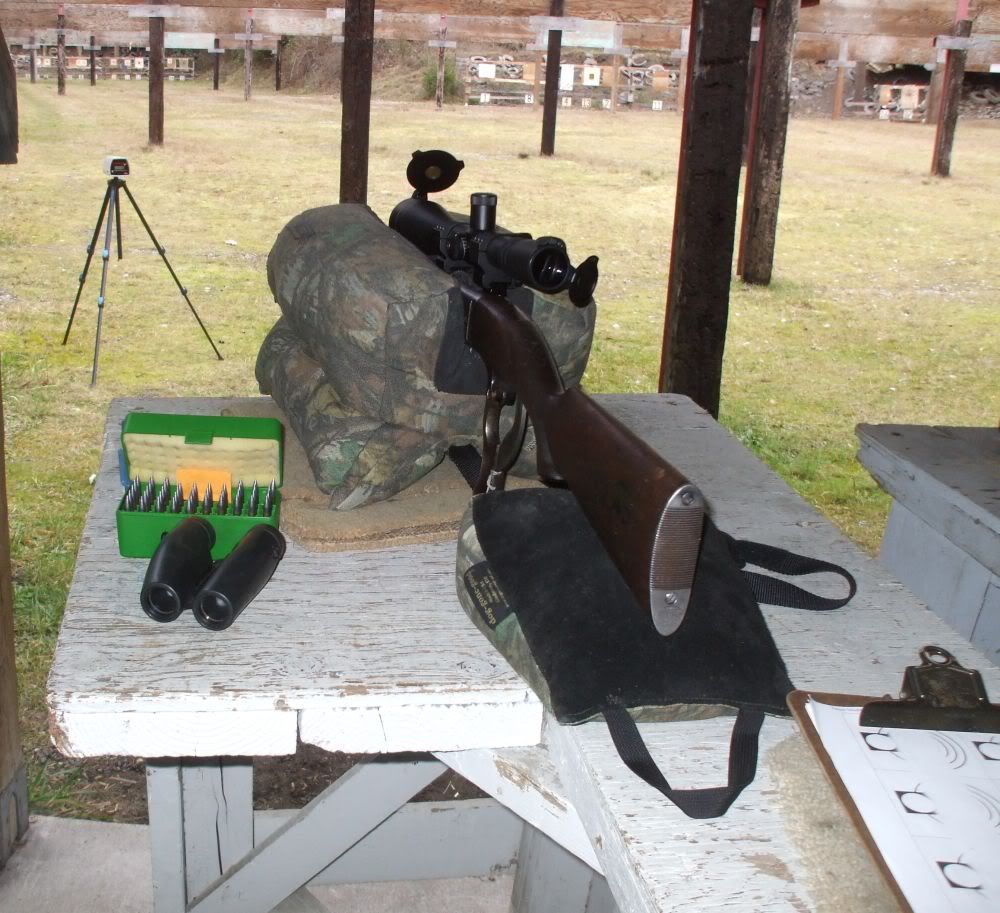Here I am at the range with my second Pro Chrono.
The first one, I shot with a handgun, it only took ~ 10 shots.
This one has lasted for years on a diet of rifle shots.
I shot two shooting Chornys the same way before that.
I now only shoot a handgun over it, after practicing with that handgun. The group has got to be small enough for the chrono to be safe.
The chonograph is screwed to the top of a camera tripod. There is 1/4-20 thread screw on the top of the tripod and a 1/4-20 female nut on the bottom of the chrono.
The chono is way out there, so it will not trip on gas.
It is carefully lined up between the target and the gun when the range is cold. I must go get it to take it home when the range is cold, too, so plan ahead.
I aim the rifle to have the bullet go right over top of the chrono, about 4" higher than the top of the chrono.
There are a pair of binoculars to read the Chrono display, it is so far away. I I have paper and pen to write down the data.
I do not use the pole sticking up out of the chrono, nor the opaque diffusers.
I useually get away with that, but at 3,000 feet on a dry sunny day, a 3,000 fps 25 cal bullet will not make much of a shadow and I will wish I had those diffusers. On a cloudy day, no problem.


